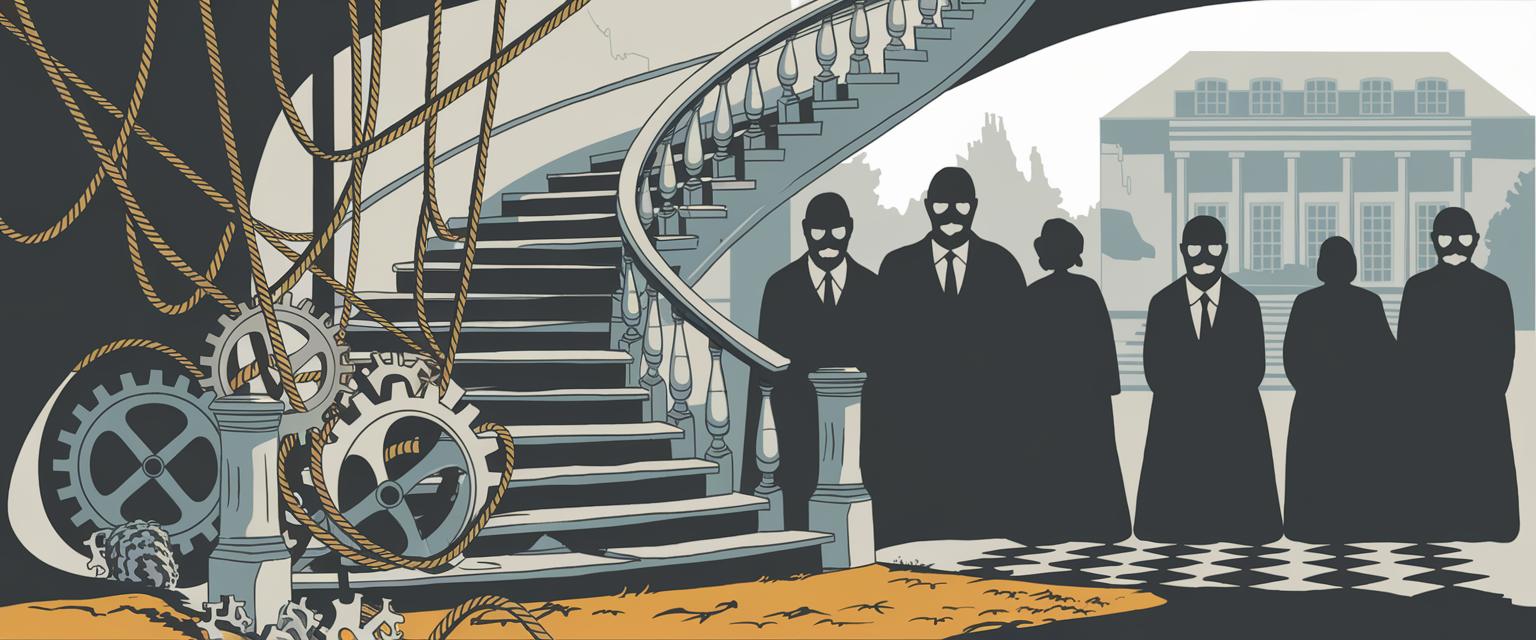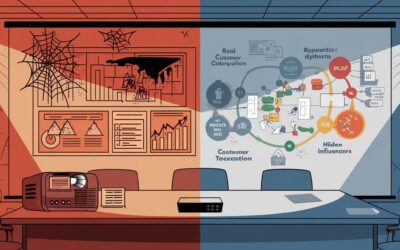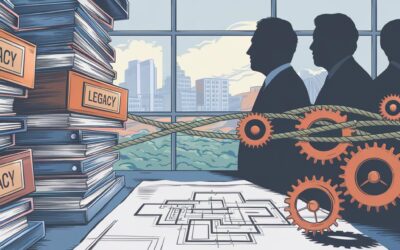Professionalizing Family Business: Overcome Common Flaws
Introduction
Family businesses in India are paradoxes. They account for 79% of our private sector output, yet many implode by the third generation. Most struggle to cross the ₹200 crore revenue mark, not because the market doesn’t exist, but because their internal systems remain frozen in time. I’ve spent four decades watching family businesses thrive or collapse based on one critical decision: whether and how they professionalize.
When I say “professionalizing family business,” I don’t mean replacing family members with MBAs or consultants who use buzzwords like “organizational matrix” or “digital transformation.” I mean establishing mature systems where accountability, measurement, and expertise matter more than surnames.
The best family businesses I’ve transformed weren’t those that abandoned family control. They were those that recognized where family members added value and where external expertise was needed – without sentiment clouding judgment.
- Most family businesses fail not from market forces but from resistance to professionalizing key functions
- Effective professionalization preserves family control while adding external expertise at critical points
- The right timing for bringing in external expertise depends on quantifiable triggers, not subjective feelings
- Professionalization succeeds when it focuses on systems and accountability, not just hiring senior executives
Table of Contents
- The Tipping Point: When to Professionalize
- Strategic Areas for External Expertise
- The Hard Benefits of Professionalization
- Overcoming Family Resistance
- FAQ
- Conclusion
The Tipping Point: When to Professionalize
Most family businesses don’t professionalize until a crisis forces their hand. This reactive approach typically costs 3-5 years of growth potential. In my work with over 50 family-owned companies, I’ve identified specific inflection points where professionalization becomes critical:
Revenue Thresholds That Demand New Systems
When a business crosses the ₹50 crore mark, the founder can no longer effectively monitor all operations. At ₹100 crore, informal decision-making becomes actively dangerous. At ₹200 crore, the lack of professional management almost guarantees growth stagnation.
Yet I regularly meet founders running ₹300 crore businesses with the same systems they used at ₹30 crore. They proudly tell me they still approve every purchase order and interview every mid-level hire. This isn’t dedication – it’s a structural flaw that prevents delegation and scale.
The “Jack of All Trades” Breaking Point
In a typical family business, the elder son might simultaneously oversee finance, procurement, and IT while the daughter manages HR, marketing, and customer service. This arrangement works until domain complexity outpaces general management skills.
I once audited a manufacturing business where the founder’s nephew, responsible for finance, couldn’t explain why their working capital cycle was 3x industry average. He wasn’t incompetent – he simply lacked specialized financial expertise while juggling five other functions.
Decision Quality Deterioration
When family executives consistently make decisions based on what worked “last time” rather than current market data, it signals professionalization urgency. This manifests as:
- Rejecting better vendors because “we’ve always worked with Sharma ji”
- Postponing ERP implementation because “our Excel sheets work fine”
- Avoiding expansion to new regions because “we don’t have family members to send there”
Quantifiable Professionalization Triggers
| Business Area | Professionalization Trigger |
|---|---|
| Finance | When closing monthly books takes >15 days or bank queries increase |
| Sales | When customer acquisition cost is unknown or sales team exceeds 25 people |
| Operations | When quality issues persist despite interventions or capacity utilization drops below 70% |
| HR | When attrition exceeds 25% or recruitment takes >60 days per position |
| IT | When system downtime affects operations or data reconciliation errors exceed 5% |
Strategic Areas for External Expertise
Professionalization doesn’t mean wholesale replacement of family with outsiders. It means strategic insertion of expertise in areas where family members lack specialized knowledge or where independence is crucial.
Finance: Beyond Accounting to Strategic Financial Management
Most family businesses I encounter have accountants, not finance professionals. They track transactions but don’t optimize capital structure or manage risk. The difference is substantial:
- An accountant ensures GST compliance; a finance professional structures working capital to reduce interest costs by 200-300 basis points
- An accountant prepares statutory statements; a finance professional builds financial models that inform expansion decisions
- An accountant records historical data; a finance professional forecasts scenarios and prepares contingencies
When Polycab India hired me as their Group CFO, we reduced debt costs, secured best-in-class ECB financing, and quadrupled PAT through professional financial management. The family maintained strategic control while allowing financial expertise to drive capital efficiency.
HR: From Administrative Function to Talent Architecture
In most family businesses, HR means payroll processing and occasional recruitment. Professional HR means designing organizational structures that scale, performance systems that reward merit over tenure, and succession planning that secures business continuity.
At Runwal Group, we transformed HR from a compliance function to a strategic capability. This involved designing a RERA-compliant organization structure, implementing performance-based compensation, and creating clear career paths for both family and non-family executives.
Technology: From Support Function to Competitive Advantage
Family businesses typically view technology as a necessary expense rather than a competitive differentiator. They invest in basic accounting software but resist digital transformation that could dramatically improve efficiency.
During my consulting engagements, I’ve seen manufacturing businesses reduce inventory by 30% and improve capacity utilization by 25% simply by implementing production planning systems with professional IT leadership.
The Professionalization Priority Matrix
| Function | Professionalization Priority | Common Implementation Approach |
|---|---|---|
| Finance & Governance | Highest – Critical for raising capital and risk management | Professional CFO with external audit committee |
| Operations & Supply Chain | High – Directly impacts profitability | COO with domain expertise; process consultants |
| Sales & Marketing | Medium-High – Depends on industry & growth goals | Family leadership with professional second line |
| HR & Organization Development | Medium – Critical as headcount grows | HR head reporting directly to promoter |
| IT & Digital | Medium – Increasingly important for competitiveness | Outsourced CIO or fractional technology leadership |
The Hard Benefits of Professionalization
Family businesses often resist professionalization because they fear losing control or diluting culture. However, the empirical benefits are too substantial to ignore. According to a Boston Consulting Group study, professionally managed family businesses outperform their peers by 14% in revenue growth and 9% in margin improvement.
Financial Performance Improvements
When Alliance Tire Group professionalized its finance function, we not only secured a $135 million greenfield project but also attracted IFC as an investor. This external validation increased enterprise value significantly before the eventual sale to Yokohama.
The financial benefits of professionalization typically include:
- Lower debt costs through improved financial reporting and governance
- Optimized working capital that frees cash for growth investments
- Reduced tax inefficiencies through proper structure and compliance
- Improved access to growth capital, both debt and equity
Operational Efficiency Gains
A chemical manufacturer I advised increased throughput by 35% within eight months of hiring a professional operations head. The new leader implemented standardized processes, preventive maintenance schedules, and capacity planning models that the family had deemed “too corporate” for years.
Operational professionalization delivers:
- Reduced production variance and quality issues
- Lower inventory levels with better availability
- Improved supplier terms through professional procurement
- Enhanced capacity utilization and asset productivity
Succession Planning and Business Continuity
Perhaps the most critical benefit of professionalization is creating a business that can outlast its founders. Only 13% of family businesses survive to the third generation in India, primarily because they fail to institutionalize knowledge and processes.
Professional management systems ensure:
- Knowledge transfer beyond the founding generation
- Clear decision rights and authority limits
- Documented processes that don’t rely on individual memory
- Governance mechanisms that prevent family disputes from derailing operations
At Crescentia Strategists, we’ve helped multiple family businesses implement succession planning frameworks that balance family considerations with business continuity requirements.
Overcoming Family Resistance
Family resistance to professionalization is natural and predictable. The key is addressing the legitimate concerns behind the resistance rather than dismissing them as “old-fashioned thinking.”
The Real Reasons Families Resist Professionalization
In my four decades working with family businesses, I’ve observed that resistance typically stems from:
- Fear of losing control: The concern that professional managers will make decisions contrary to family values or interests
- Privacy concerns: Worry that financial information will be exposed outside the family circle
- Identity threat: When family members’ self-worth is tied to their operational roles in the business
- Cost concerns: Perception that professional management is an expense rather than an investment
- Past disappointments: Previous negative experiences with outside advisors or executives
Practical Strategies for Overcoming Resistance
The most effective approach to overcoming resistance is a phased implementation that builds confidence through early wins.
1. Start with Non-Threatening Areas
Begin professionalization in functions where family has the least emotional attachment. For most businesses, this means finance or IT rather than sales or product development. Early successes build confidence for more sensitive areas.
2. Create Clear Accountability Systems
Implement performance measurement systems before hiring professional managers. This creates objective criteria for evaluating both family and non-family executives, reducing fears of bias.
3. Use Board Structures Effectively
Create an advisory board with respected external members before considering a formal board of directors. This introduces external perspective without governance changes that might threaten family control.
4. Define Clear Decision Rights
Document which decisions remain with family and which are delegated to professional managers. This clarity reduces anxiety about loss of control and provides boundaries for new executives.
5. Implement Family Employment Policies
Establish clear policies for family member employment, compensation, and promotion. This reduces nepotism concerns while creating pathways for qualified family members to advance.
The Four-Phase Professionalization Approach
| Phase | Key Actions | Timeline |
|---|---|---|
| 1. Foundation | Document processes, implement basic reporting, create family constitution | 3-6 months |
| 2. Initial Professionalization | Hire in 1-2 key functions, implement performance systems | 6-12 months |
| 3. Organizational Design | Restructure for scale, implement succession planning, expand professional team | 12-24 months |
| 4. Institutional Capability | Formalize governance, transition family to strategic oversight | 24-36 months |
FAQ
When should a family business hire external experts or managers?
A family business should hire external experts when:
- Specialized knowledge is required that doesn’t exist within the family (e.g., digital marketing, financial restructuring)
- Growth has created complexity beyond what current systems can handle (typically at ₹50-100 crore revenue)
- Performance metrics (margins, growth, productivity) lag industry benchmarks by 15% or more
- The business is preparing for significant transitions (funding rounds, acquisitions, generational succession)
- Family members are overwhelmed by wearing multiple hats, leading to operational bottlenecks
The timing should be proactive rather than reactive – ideally when the business is performing well but showing early signs of structural limitations.
What are the benefits of professionalizing operations in an SME?
Professionalizing operations in an SME delivers several measurable benefits:
- Financial: 10-15% improvement in EBITDA margins through cost optimization and efficiency gains
- Operational: 20-30% improvement in productivity metrics and reduced process variance
- Strategic: Ability to pursue growth opportunities beyond founder’s direct oversight
- Valuation: 2-3x multiple expansion due to reduced key person risk and improved governance
- Succession: 80% higher success rate in generational transitions compared to non-professionalized businesses
These benefits compound over time as professional systems create the foundation for sustainable growth.
How do we balance family values with professional management?
Balancing family values with professional management requires intentional design:
- Document core family values and ensure they’re incorporated into company mission statements and policies
- Create a family council separate from business management to preserve family cohesion
- Implement a family constitution that clarifies roles, responsibilities, and decision rights
- Design performance systems that measure both financial outcomes and adherence to core values
- Develop onboarding processes that immerse professional managers in family history and values
The most successful family businesses don’t see family values and professional management as contradictory – they use professional systems to institutionalize and scale the values that made the business successful.
Will bringing in outside executives dilute our family culture?
Not if implemented correctly. The key is distinguishing between family culture (the values and principles that drive decisions) and family management (having family members in operational roles).
Professional executives can preserve and strengthen family culture when:
- They are hired for cultural fit as well as technical expertise
- Family maintains active involvement in strategic direction and core values
- Performance systems reward alignment with family values alongside financial metrics
- Communication channels between family and management remain open and transparent
In my experience at Polycab and Alliance Tire Group, professional management actually strengthened family culture by implementing systems that allowed the founders’ values to scale beyond their personal oversight.
Conclusion
After four decades working with family businesses across India, I’ve observed a clear pattern: those that professionalize proactively thrive, while those that resist until crisis forces their hand often fail to recover fully.
The most successful family businesses recognize that professionalization isn’t about replacing family with outsiders. It’s about creating systems where family vision and values can scale beyond what any individual can personally oversee.
At Crescentia Strategists, we’ve developed a simple litmus test for family business readiness: Can the business function effectively if the founder takes a three-month sabbatical with no communication? If the answer is no, professionalization isn’t just advisable – it’s urgent.
The path forward isn’t abandoning family control. It’s evolving from operational management to strategic governance – where family sets direction and values while professional systems execute with discipline and accountability.
This transition isn’t easy. It requires honest assessment, willingness to change, and sometimes difficult conversations. But the alternative – watching a generational legacy stagnate because of outdated systems – is far more painful.
The question isn’t whether to professionalize your family business. The question is whether you’ll do it proactively, on your terms, or reactively, when crisis leaves no alternative.
Schedule a transformation consultation with Crescentia Strategists to discuss how we can help you professionalize key functions while preserving the family values that make your business unique.






